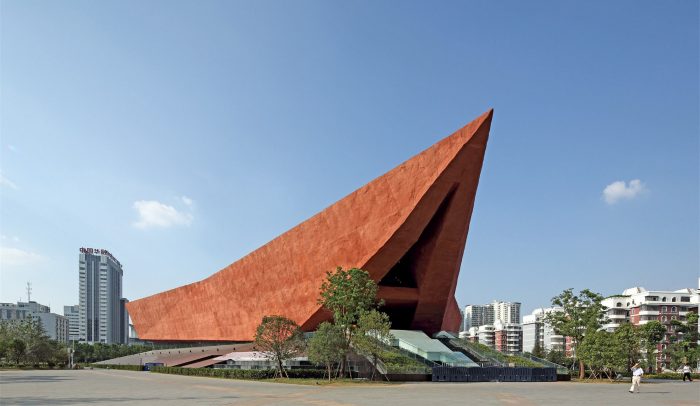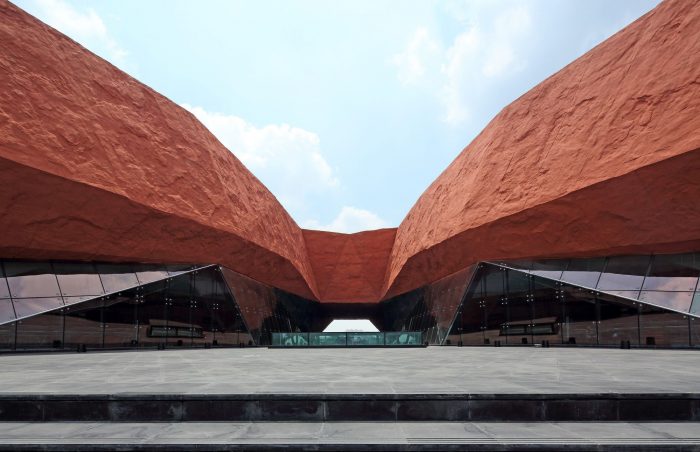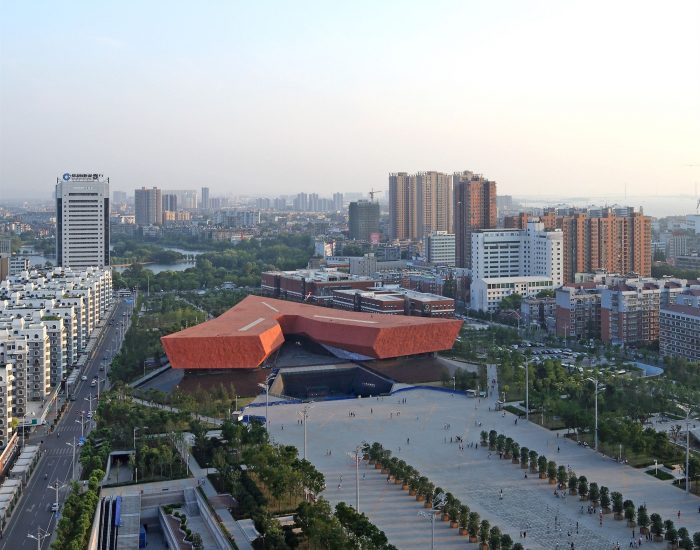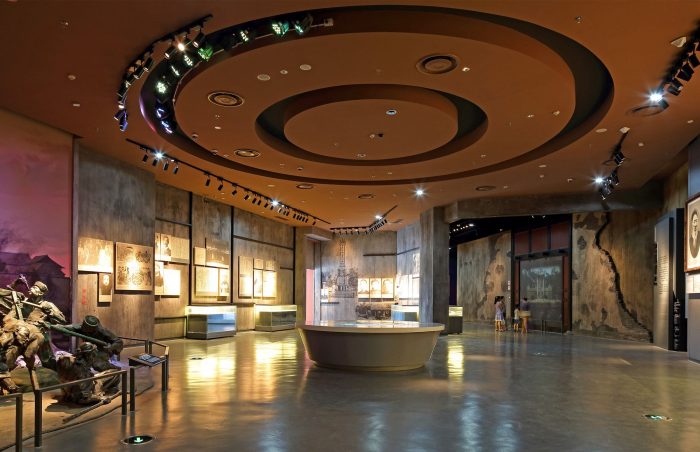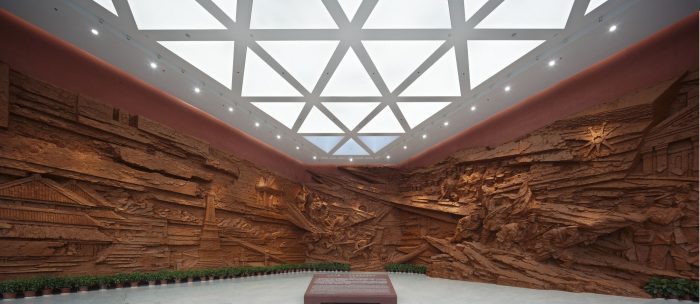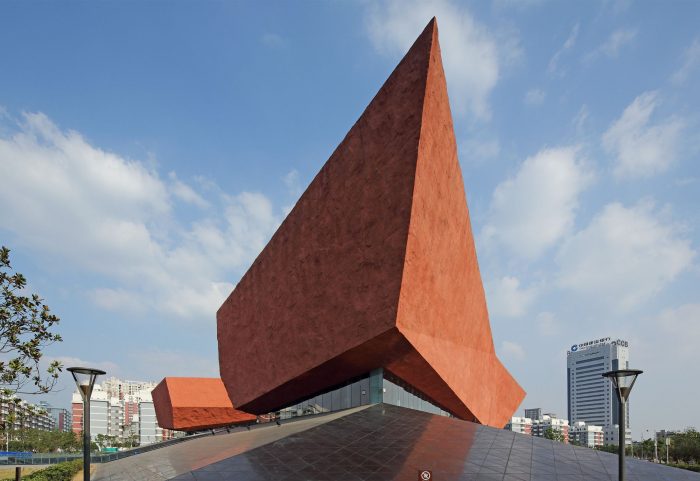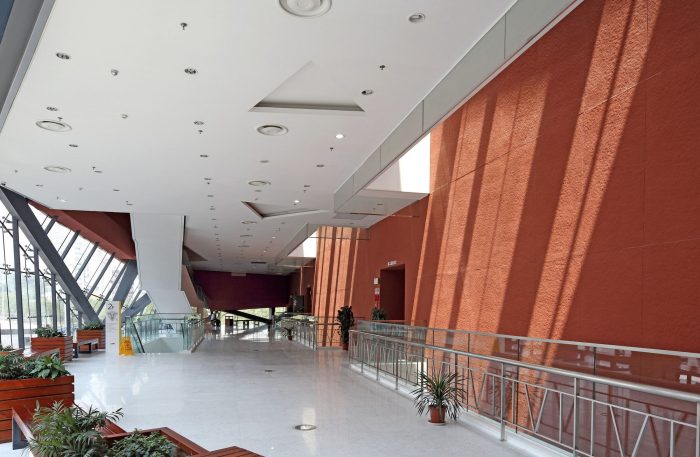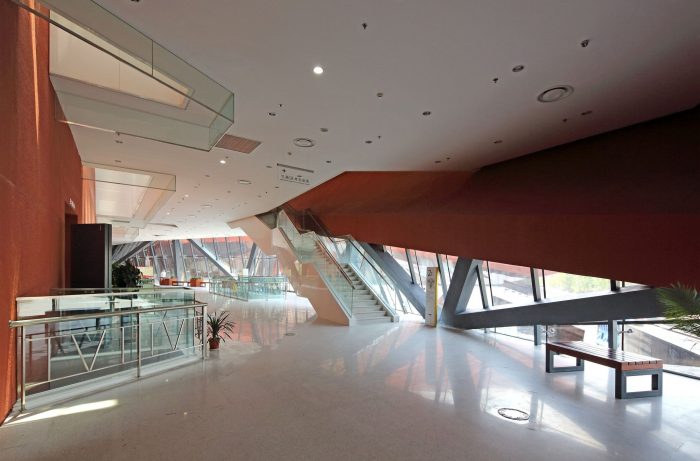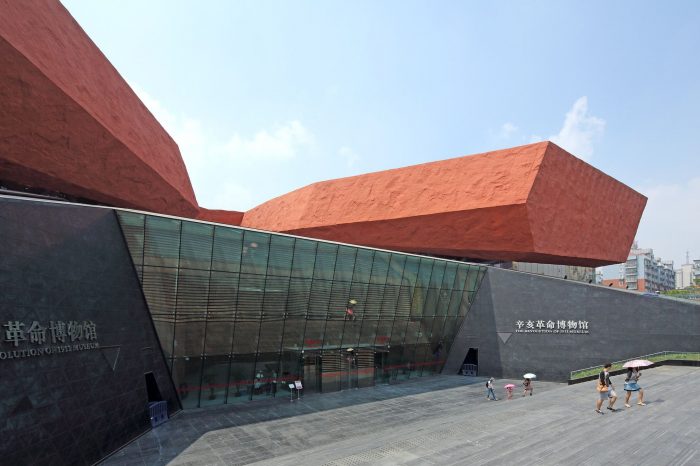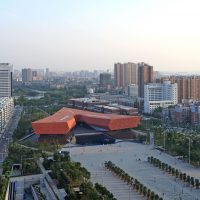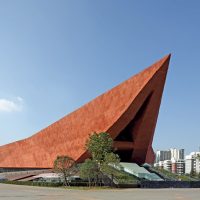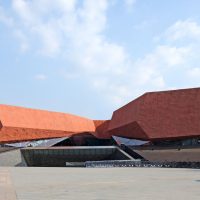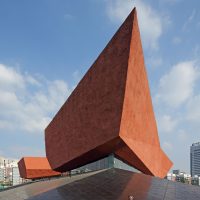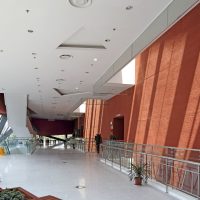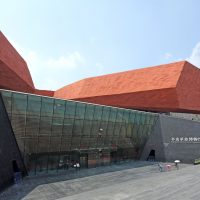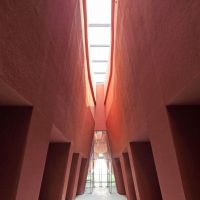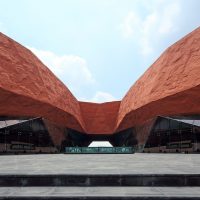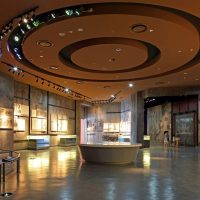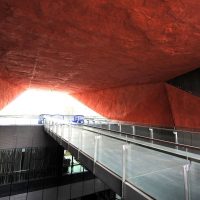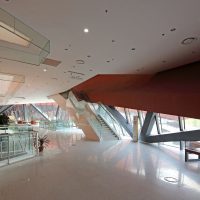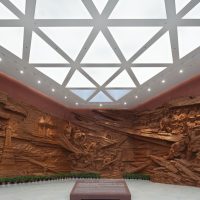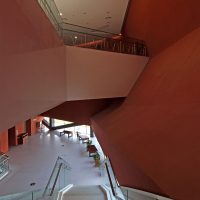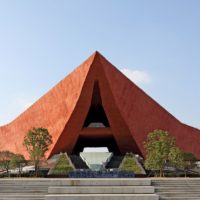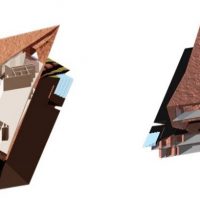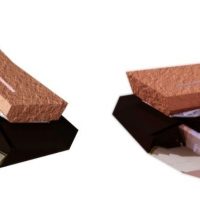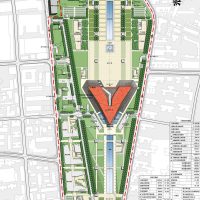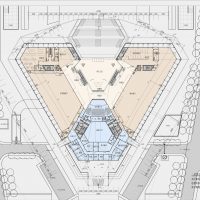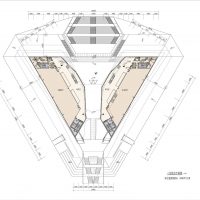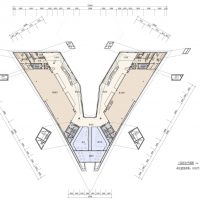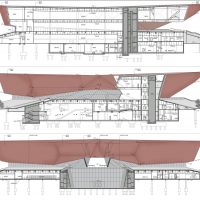1911 Revolution Museum is a themed museum built to celebrate the 100th anniversary of the Revolution of 1911 Shouyi, Wuchang. Located at the south side of Shouyi Square, Wuchang District, Wuhan, the Museum, together with the former address of Wuchang Uprising Military Government (the Red Building), the Bronze Statue of Sun Yat-sen, the Commander Title Granting Monument, and the Martyrs Memorial Archway, constitute the sparkling cultural symbols of Shouyi Square.
1911 Revolution Museum, consisting of a lobby, 5 exhibition halls, and 1multi-functional exhibition hall, integrates together functions of display, cultural relics collection, publicity, education and scientific research. It is the museum enjoying the largest scale, best display technology, most reproduced scenes and most complete visiting guide system among all the museums themed with the Revolution of 1911.
Prominent Comprehensive Social Effects
1911 Revolution Museum, with construction, started in August 2009 and finished in September 2011, was open to the public for free since October 2011 and has attracted accumulatively 1,360,000 visitors. It is not only the new cultural landmark of Shouyi Square but also an important window for visitors at home and abroad to appreciate the Wuhan culture and feel the charms of Wuhan. The primary exhibits of the Museum—The History of the Revolution of 1911—-The Foundation of the Republic, is made up of five parts: China in the late Qing Dynasty, Origin of the Revolution, the First Uprising in Wuchang, the Establishment of the Republic and the Century since 1911. With the display of 428 pieces/sets of relics, 694 historic photos, 27 reproduced scenes of significant historical events, 12 pieces of artwork and 20 multimedia exhibits relating to the Revolution of 1911, the Museum demonstrates the historical changes of the revolution and the outstanding achievements of this “republic” foundation of China, in a multi-angle and profound way.
The Planning Enhances the Urban Environment
Culture Corridor and Triangular Composition
In combination with the urban and scenic culture, a culture corridor made up of the Yellow Crane Tower and the Snake Mount Battery in the shape of regular triangle finally takes shape. The regular triangle itself reminds people of the positive and progressive attitude, which corresponds to the spirit of the Revolution of 1911.
Interactive and Open Public Space
Corresponding to the partially receding north side of the Red Building, the Museum and the U-shaped Red Building complex form a spatial enclosure and an interactive relation in form, indicating the historical echo and correspondence for the last century. No effort is spared to build the Museum into a friendly and open public space.
The connectivity of the buildings enables the extension and access to the southern and northern axis of the cultural area of Shouyi. Stepping along the stairs, citizens can go to the Museum, enjoying the close relationship with the architecture, and the close relationship between the architecture and the city.
Unity of Architectural Structure
Highly Unified Form and Structure
Folded plates and steel frame structure were adopted. The triangular batter posts on the building exterior act not only as the support of the outer curtain wall, but also the vertical support of the building. This unified design forms the regular but pillar-less exhibition hall and public space and finally achieves the perfect unity between architecture and structure.
Appropriate Spatial Structure Design
As for the folded plates and steel frame components, control line together with node detailing were used, which saved 45 days for the construction of the steel structure. Interconnected welded joints were used to connect all the folded plates and steel structure to form the space, which saved the construction period as well as the cost by RMB 1,800,000 compared with the cast iron joints.
The Architecture Inherits Regional Culture
Carry forward the Shouyi Spirit
1911 Revolution Museum, with unique outline design, blends the traditional architectural elements of China with the modern architectural features. The high-platform big-roof structure perfectly illustrates the “double roof” and the “overhanging eaves” of Chinese architecture; the geometrically uprising outer wall implies the first-uprising spirit of “dare to be the first”, the triangular architectural motif brings positive and innovative implication to the architecture, indicating the success of the First Uprising in Wuchang.
Create Historical Atmosphere
With shapes in sculptural style, the building gives “resolute, steadfast, tall and strong” visual impression. The outer wall, with the naturally carved and weathered textures, brings the artistic effect of “breaking through the soil, taking shape naturally” in the architecture and finally creates a profound historic atmosphere.
Reproduce the Chu State’s Charm
With the outer wall in red and the foundation in black, the building reflects not only the comparison between the “revolution” and “darkness” of the Museum but also the “red” and “black” tone of the classical architecture in the ancient Chu State.
Space Narrates the Historical Event
A Journey of Experience
Spatial narration method is used in the design, trying to tell the start, development, climax and end of the special historical event—the Revolution of 1911, to the public through the architectural language. Stepping down 5.4m from outside to enter the lobby, the visitors go through the noise-quietness—thoughts spiritual experience. The whole entrance lobby is located on the gentle slope, creating intentionally the dark governance and the great blood-shed atmosphere before the Revolution; walking upwards and entering the 2nd floor, the visitors may feel the hard spiral course of the Revolution; the exhibition hall and the outdoor display area introduce the natural light into the indoor space, creating a “there is another unexpected hope”; feeling. Visitors then will feel the explosion and unexpected changes of the Revolution; the 3rd floor is the highest part of the Museum, with an open terrace at the south side which enables you to look into the whole South Square and the Ziyang Lake and feel the endless glory of the Revolution when it reaches the climax. Visitors “look along the journey and feel in the heart” during the visit and their inner world will be sublimated. The process of visiting the Museum is also a journey of soul experience.
The Wall Made of Light Plates
In order to create the naturally carved texture, GRC plates are used for the inner and outer wall, with area reaching 11,000m2. This GRC outer wall, with large-scale, consistent but irregular surface texture, maximum bump reaching 25cm and distinct sculptural style, is by now the first in China. Compared with traditional natural stone, the material used here features large size, rich and adjustable colors. Furthermore, it guarantees the continuity of the irregular texture and thus better expresses the spirits and special artistic atmosphere of the building.
Energy-saving Low-carbon Building Material
GRC plats are made of environment-friendly renewable materials, that is, abandoned rock powder and ballast. The lightweight and high performance greatly reduce the usage of concrete; the low-carbon and environment-friendly features make it better comply with the “resource-saving and eco-friendly society” spirit. Compared with the dry-hanging marble outer wall, GRC plates reduce the structural member size. According to statistics, the Museum has saved totally about 300m³ concrete and about 160t steel.
Appropriate Technology—Green and Energy-saving
Green and energy-saving technologies appropriate to local climate were used. A central air-conditioner is powered by the frequency-conversion integrated refrigeration station. Here, the combination of maglev and all frequency conversion is the first in China and it has effectively reduced the energy consumption of the building. The refrigeration system in the building has further saved energy by 50% when compared to the published energy-saving standards.
Comprehensive Application of Digital Technology
The splayed outer wall on the north side of the Museum is designed in irregular polygonal shape and made up of a variety of triangle folded plates with different shapes and sizes. This complicated spatial structure can hardly be designed accurately with conventional design tools and methods.
The difficulty of “3D space” brought by the irregular shape and unrepeated outer wall blocks of the building is solved by using 3D design software RHINO, REVIT, CATIA, NAVISWORKS and TEKLA and through the integration by BIM technology and accurate 3D positioning of each block was realized finally. What’s more, by making use of the advantage that 3D model is easy to visualize, the difficulty in complex space in design was solved.
Project Info
Architects: CADI
Location: Hubei, China
Architect in Charge: Lu Xiaoming, Ye Wei
Design Team: Lu Xiaoming, Ye Wei, Guo Lei, Ding Mao, Li Mingyu, Cai Xiaopeng, Wen Siqing, Wang Xin, Shao Guofen, Zhang Hao, Hu Wenjin, Lei Jianping, Sun Yanbo, Liu Bin, Ou Yangjian
Area: 22138.0 sqm
Year: 2011
Type: Museum
Photographs: Zhang Guangyuan
- Photography by © Zhang Guangyuan
- Photography by © Zhang Guangyuan
- Photography by © Zhang Guangyuan
- Photography by © Zhang Guangyuan
- Photography by © Zhang Guangyuan
- Photography by © Zhang Guangyuan
- Photography by © Zhang Guangyuan
- Photography by © Zhang Guangyuan
- Photography by © Zhang Guangyuan
- Photography by © Zhang Guangyuan
- Photography by © Zhang Guangyuan
- Photography by © Zhang Guangyuan
- Photography by © Zhang Guangyuan
- Photography by © Zhang Guangyuan
- Photography by © Zhang Guangyuan
- Model 01
- Model 02
- Floor Plan
- Second Floor Plan
- Second Floor Plan
- Third Floor Plan
- Section


